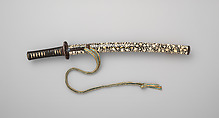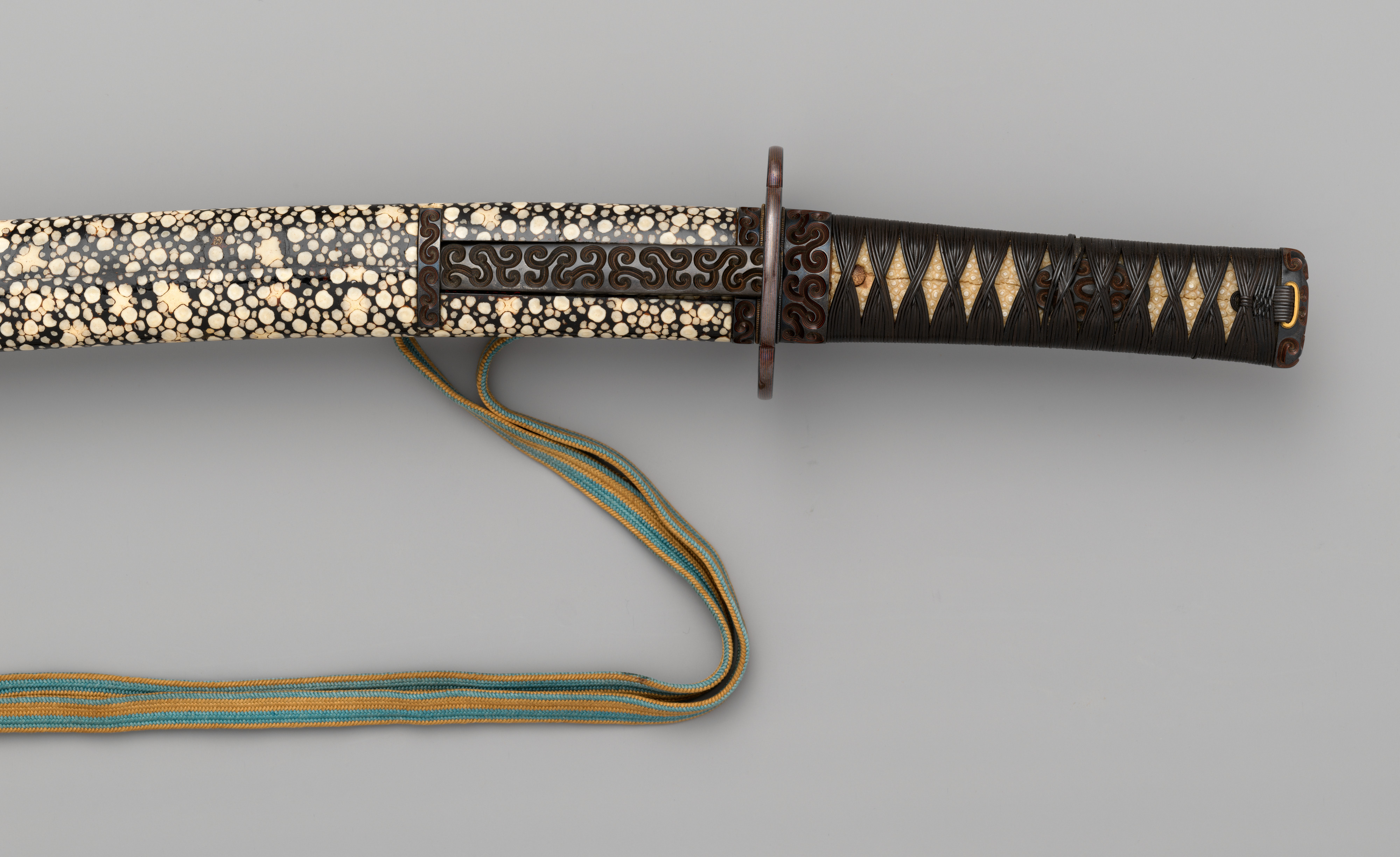グリ彫金具脇指拵 Blade and Mounting for a Short Sword (Wakizashi)
Bladesmith 尾張関 Owari-Seki Japanese
This mounting is distinguished by its fittings made of multiple alternating layers of copper-gold alloy (shakudō) and dark red copper (hiirodō), which are carved in a spiral manner to reveal the layers. This technique, referred to as guribori, has its roots in lacquerwork. Swords mounted with a matching set of guribori fittings are rare. Covering the scabbard is a type of ray skin whose nodules resemble plum blossoms (Japanese: kairagi). It has been lacquered black and then polished to reveal parts of its texture. The blade is unsigned, but can be attributed to an Owari-Seki (尾張関) swordsmith from the early Edo period (17th century).
Due to rights restrictions, this image cannot be enlarged, viewed at full screen, or downloaded.
This artwork is meant to be viewed from right to left. Scroll left to view more.





